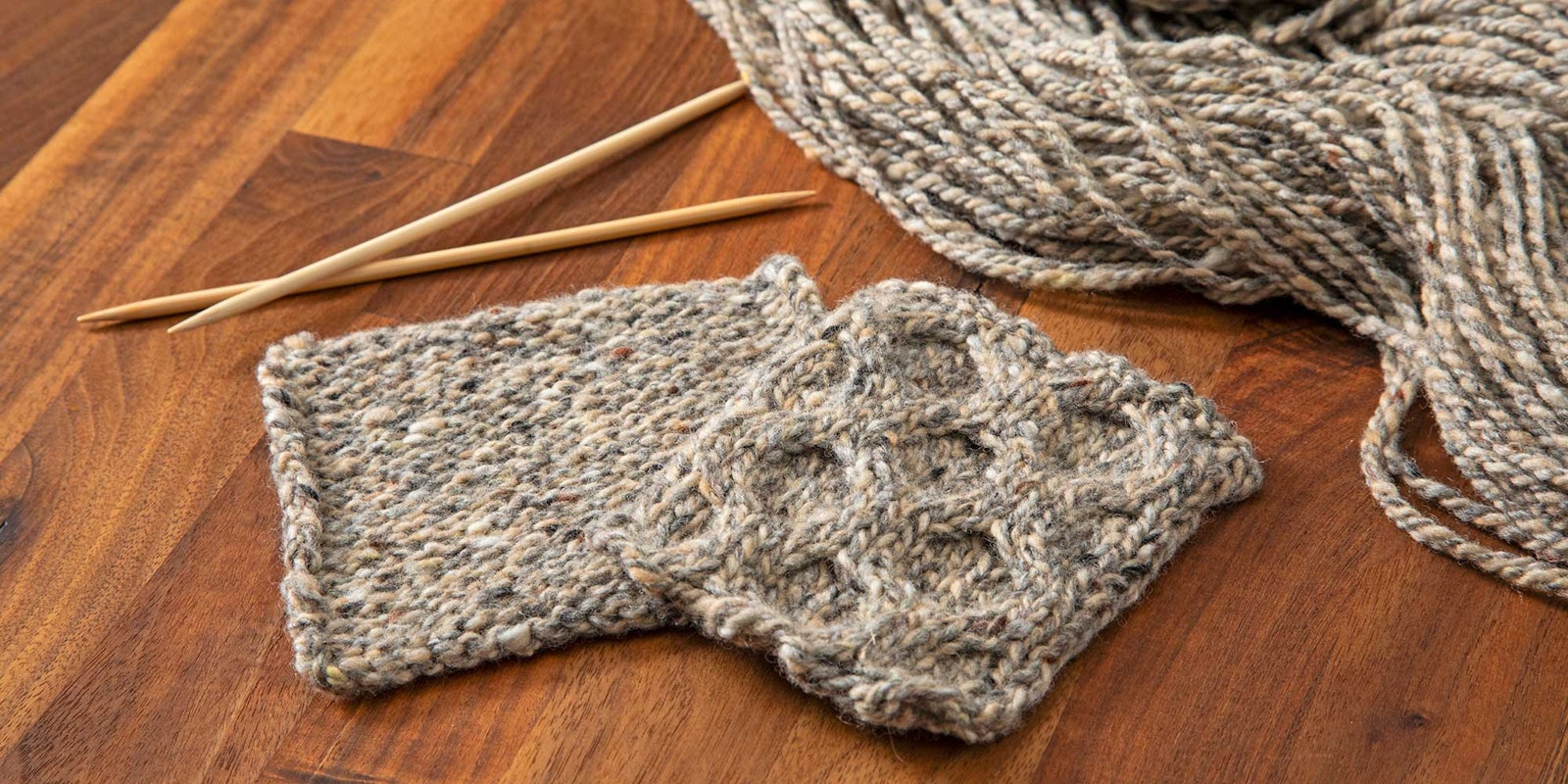Perfectly imperfect yarn so often has a natural charm—maybe it has a bit of thick and thin, some undulations of color, or slight variegations from skein to skein. When we encounter a combo of gentle texture and tweedy colors, how will it affect the knitted fabric.
I’ve been exploring Marl Soft by Studio Donegal and have worked up a small stack of swatches as I play with motifs. This squishy Merino tweed is also a marl, so not only are there color pops in each of the two plies, but the base color of each ply is also different. This creates even more color interest in the knitted fabric.
 Untwisting this two-ply yarn reveals two tweed singles of different shades—a marled tweed.
Untwisting this two-ply yarn reveals two tweed singles of different shades—a marled tweed.
So, how do I make sure that the texture and color spun right into the yarn doesn’t outshine my knitting pattern? Here are a few tips to explore:
Knitting smooths your path.
As with weaving and crochet, knitting has an amazing ability to subdue texture. Mildly irregular yarns can create smooth and consistent textiles—pretty amazing! This smoothing effect can be so effective, however, that we might lose the yarn’s natural character.
 Left to right: Stockinette and reverse stockinette
Left to right: Stockinette and reverse stockinette
You really just need to jump in with the suggested needle size (or your best guess for your typical tension) and cast on a swatch. While stockinette subdues texture, reverse stockinette can still let the yarn’s character shine. You get to decide which is the “right side” of the fabric.
Play with gauge.
I think it’s good to remember that the gauge indicated on the yarn label is a suggestion. The gauge we choose impacts surface texture, too. The more densely knitted the yarn is, the smoother the fabric will appear. Bigger needles can mean more texture when it comes to traditional tweeds. Marl Soft is a Merino yarn, and I found it highly responsive to tension changes when trying needle sizes. Washing your swatch will give you the best information about the final gauge after finishing.
Look for relief.
Tweeds in general, and many of the colors in Studio Donegal’s Marl Soft in particular, are a great fit for cable-knit motifs. As I was winding this skein into a ball, I was already daydreaming of the piles of cabled Aran-inspired sweaters I’ve seen at tourist shops in Ireland.
For this yarn, I would look for cables and motifs with strong relief. The much-loved honeycomb pattern shown here is a great example of a simple cable motif that creates strong relief. As the light plays across the surface and creates shadows, the repeating motif is clear as day. If the four-stitch cables that make up this pattern were placed in a different way or spread farther apart, there would be less relief and the pattern might be harder to see. You would just have to give it a try and see what happens—that’s the fun bit!
 Honeycomb stitch
Honeycomb stitch
Find some distance.
After knitting a set of swatches, I often lay them on the floor in my studio where I’ll see the changing light move across them during the day. Placing them somewhere you can see at some distance, such as the bottom of a staircase or on a bulletin board, can help you get a sense of how the fabric might work in an accessory or garment. The only trouble might be explaining to family and friends that the seemingly scattered swatches are, in fact, important experiments; they’ll get used to it.
Happy swatching! —Kate
Kate Larson, editor of Spin Off, teaches handspinning around the country, has published knitting patterns in books and magazines, and spends as many hours as life allows in the barn with her beloved flock of Border Leicesters.

